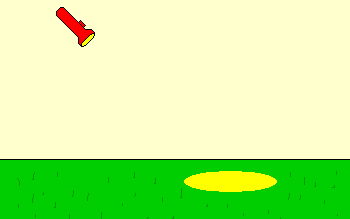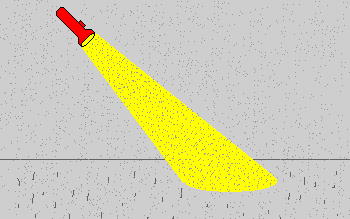Scattering
Seawater has bubbles, suspended particles, organisms, and many other things that affect sound as it travels through seawater it. The use of a flashlight can be used as an example to illustrate what happens. Most of the time, the flashlight creates a circle of light on objects at which it is pointed.

However, what happens when it is foggy out? You may have noticed that you can now see the beam of the flashlight.

What is different? When it is foggy out, the air contains many water molecules. When you shine the flashlight in fog, the light is scattered in all directions off the water molecules, making the beam of the flashlight visible. When the light is scattered, it does not travel as far. Therefore on foggy nights the headlights of a car do not project as far as on clear nights.
Sound is a wave just like light. The same thing happens in the ocean to sound waves that happens to the flashlight beam. The amount of scattering is affected by the size of the object (the scatterer) and the wavelength of the sound. An object will be a significant scatterer if its size is comparable to or bigger than the wavelength of the sound. You can calculate the wavelength of sound in seawater by dividing the speed of sound (approximately 1500 meters per second) by the frequency of the sound.
For example, a 200 Hz sound will have a wavelength of 7.5 meters (1500 meters per second divided by 200 cycles per second = 7.5 meters). If the object is much smaller than one wavelength of the sound, the sound will tend to travel around the object in its path and not be significantly affected. That is why scientists use high frequency sound to look for small objects, such as fish, in the ocean.